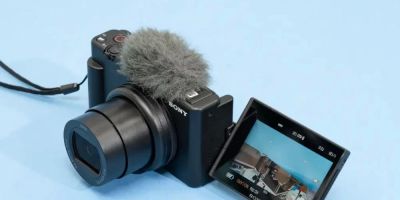
- Understanding-HDR-Photography
- Essential-Camera-Gear-for-HDR
- Lenses-and-Accessories
- Practical-Tips-for-HDR-Photography
- Why-Choose-Photo-Studio-for-Your-Gear
1. Understanding HDR Photography
High Dynamic Range (HDR) photography has revolutionized how photographers capture scenes with varying levels of brightness. Unlike traditional photography, which can struggle with either overexposed highlights or underexposed shadows, HDR combines multiple exposures to create a balanced and vibrant image that reflects what the human eye perceives. This technique is especially popular in landscape, real estate, and architectural photography where detail preservation is crucial.
But mastering HDR photography isn’t just about software processing; the quality of your gear plays a significant role in the outcome. From the camera’s sensor capabilities to the stability offered by your tripod, each piece of equipment influences the final result. Understanding what gear to invest in can save both time and frustration, especially for photographers eager to produce stunning HDR images.
2. Essential Camera Gear for HDR Photography
2.1 Cameras with High Dynamic Range Capability
Choosing the right camera is the foundation of excellent HDR photography. Cameras with wide dynamic range sensors can capture more details in shadows and highlights even in a single shot, which enhances the HDR workflow. Full-frame DSLRs and mirrorless cameras from brands like Canon, Nikon, and Sony are highly recommended. For instance, the Sony A7R IV offers exceptional dynamic range and high-resolution files perfect for merging multiple exposures.
2.2 Tripods for Stability and Precision
One of the biggest challenges in HDR photography is keeping the camera perfectly still across multiple exposures. Even slight movements can cause ghosting and misalignment. Investing in a sturdy, reliable tripod is crucial. Carbon fiber tripods provide excellent stability without being overly heavy, making them ideal for outdoor HDR shoots. A tripod head with smooth panning and locking mechanisms also allows precise framing and easier bracketing.
2.3 Remote Shutter Releases
To minimize camera shake when shooting multiple exposures, remote shutter releases or intervalometers are invaluable. They let you trigger the shutter without physically touching the camera, preserving sharpness and alignment across the bracketed shots. This is especially helpful in low light or long exposure HDR scenarios.
3. Lenses and Accessories for Enhanced HDR Photography
3.1 Choosing the Right Lenses
Lenses greatly impact the clarity and dynamic range of HDR images. Prime lenses with wide apertures provide sharpness and excellent light gathering, but for HDR, versatile zoom lenses with minimal distortion are also popular. Wide-angle lenses help capture expansive scenes often seen in landscapes, while tilt-shift lenses can correct perspective distortion in architectural HDR photography.
3.2 Neutral Density Filters and Graduated Filters
Filters are essential tools that help manage exposure in tricky lighting conditions. Neutral density (ND) filters reduce light intensity uniformly, enabling longer exposures for creative effects such as silky water flow or cloud movement in HDR shots. Graduated ND filters are particularly useful for balancing bright skies with darker foregrounds, making the multiple exposures easier to blend seamlessly.
3.3 Extra Batteries and Memory Cards
HDR photography often involves taking multiple shots in rapid succession, which can drain your battery faster and fill up storage quickly. Always carry spare batteries and high-speed memory cards with ample capacity to ensure uninterrupted shooting sessions.
4. Practical Tips for Getting the Most Out of Your HDR Gear
4.1 Bracketing Settings
Mastering bracketing is key to HDR success. Most modern cameras offer automatic exposure bracketing (AEB), which allows you to capture multiple shots at different exposures quickly. Typically, a sequence of three to seven images covering a range of -2 to +2 EV ensures enough data to create a balanced HDR image. Adjust these settings based on the scene’s contrast and lighting complexity.
4.2 Post-Processing Software
Even with the best gear, post-processing is where your HDR images come to life. Software like Adobe Lightroom, Photoshop, or specialized HDR tools such as Photomatix help merge exposures and tone map the final photo. Learning to fine-tune parameters like contrast, saturation, and ghost removal can elevate your images from ordinary to breathtaking.
4.3 Real-World Example: Capturing a Sunset Landscape
During a recent shoot at a coastal cliff during sunset, a photographer used a Sony A7R IV mounted on a carbon fiber tripod and a 16-35mm f/2.8 lens. By bracketing seven exposures from -3 to +3 EV and employing a graduated ND filter, the team captured the vibrant colors of the sky while preserving details in the shadowed rocks below. The remote shutter minimized vibrations, resulting in perfectly aligned images that merged into a stunning HDR photo illustrating the scene’s natural beauty.
5. Why Choose Photo Studio for Your HDR Photography Gear
Finding the best photography gear for HDR photography can be overwhelming with so many options available. Photo Studio offers carefully curated selections of cameras, lenses, tripods, and accessories tailored for HDR photographers of all levels. Whether you’re a beginner or a seasoned professional, our expert advice and high-quality product range help you make informed choices that suit your style and budget.
Beyond just equipment, Photo Studio also provides personalized recommendations and services, such as equipment rentals and workshops, ensuring you have the right tools and knowledge to elevate your HDR photography. When you want to invest in gear that truly makes a difference, Photo Studio stands out as a trusted partner in your photographic journey.





